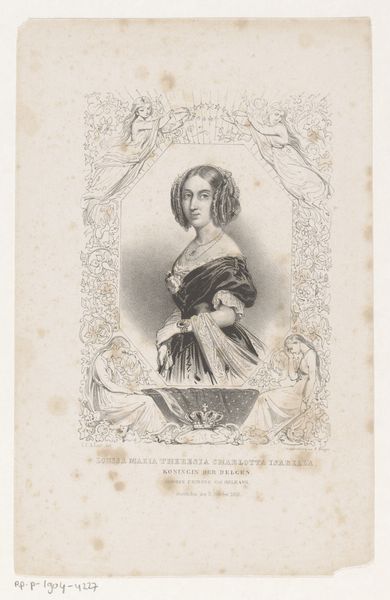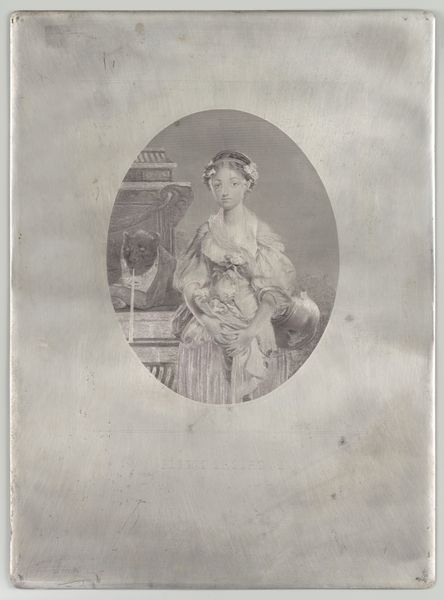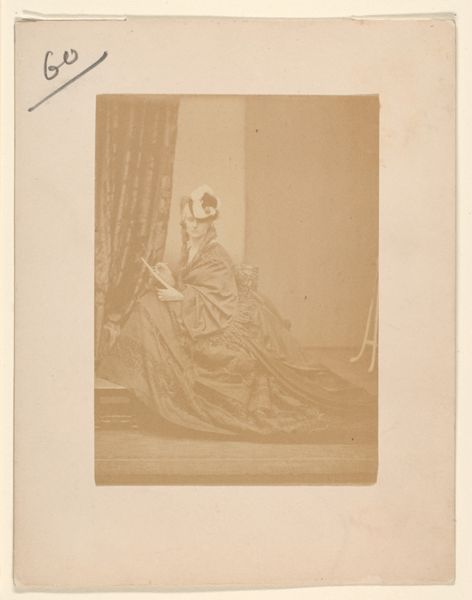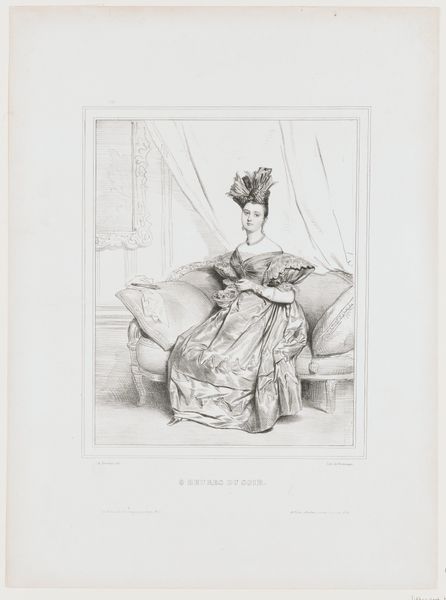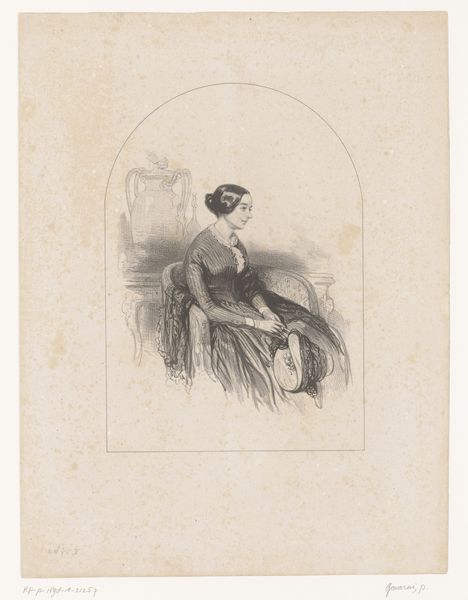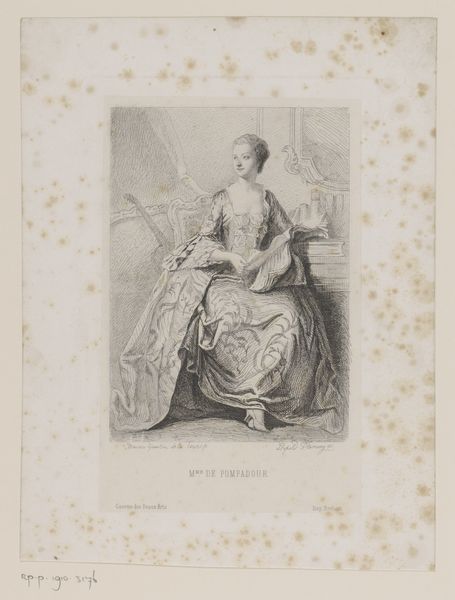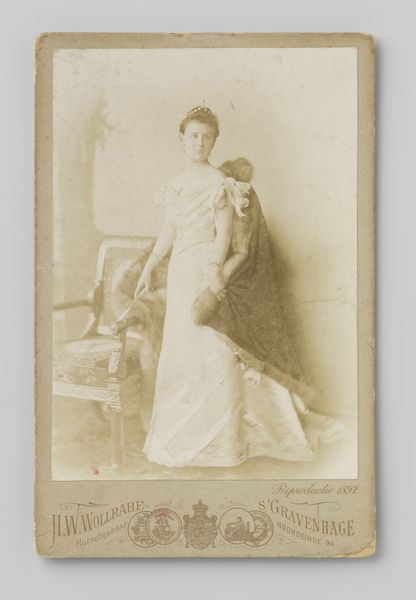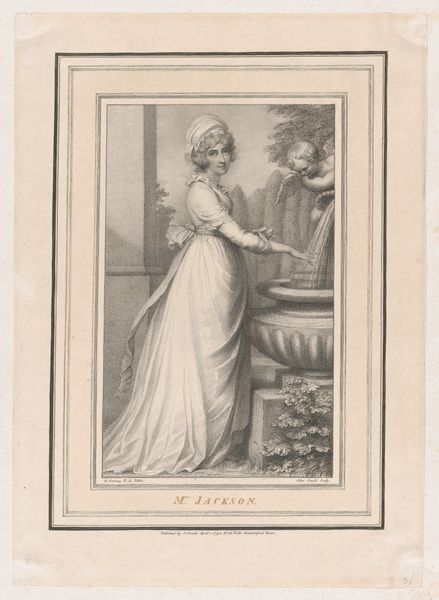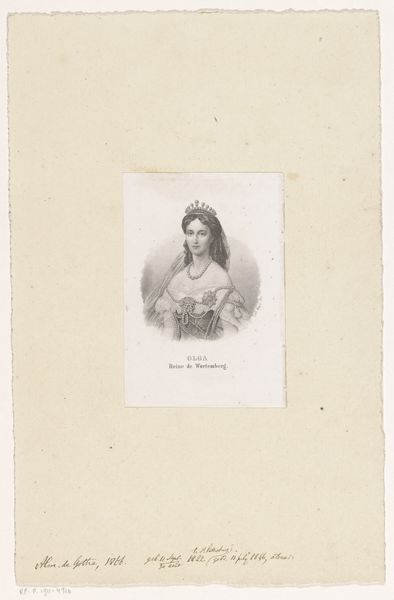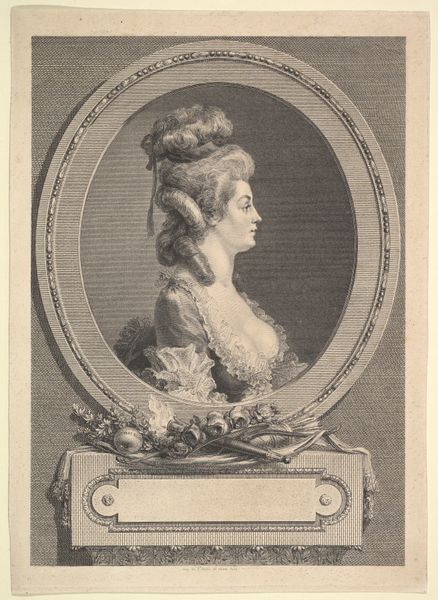
print, engraving
#
portrait
#
neoclacissism
# print
#
old engraving style
#
history-painting
#
engraving
Dimensions: 343 mm (height) x 255 mm (width) (bladmaal)
Editor: Here we have Terkel Kleve's "Dronning Juliane Marie," created in 1779. It's an engraving, a print. It strikes me as very formal, almost theatrical, with this strong circular frame around the Queen. What do you see in this piece? Curator: The visual language is incredibly rich, a veritable tapestry of symbolic communication. Notice how the oval frame itself – reminiscent of a mirror or a royal seal – contains not just the Queen, but also a miniature portrait behind her. It’s a layered approach to portraying identity. Editor: That's interesting, I hadn't noticed the painting in the background initially! Who do you think it could be? Curator: The presence of the miniature portrait functions as a memory anchor. Could it be her late husband, perhaps? Or a dynastic ancestor? The symbol operates on multiple levels, it roots Juliana Marie in time and tradition, subtly lending her authority. What do you make of the document she holds? Editor: I imagine it's related to her royal duties? The light highlights the paper. Curator: Precisely! Consider the act of reading, the symbolism of text. In this era, literacy was power, and her engagement with this document—likely a decree or a treaty—presents her as an active, intellectual ruler, and links her actions with the well being of her people. How do you think it sits within Neoclassicism? Editor: I see that there is some link to the period since it uses simple lines, which creates an elegant style with some sort of simplicity. I appreciate learning about the ways portraits operate in this time. Curator: Indeed, an image is not just a likeness; it is a carefully constructed narrative meant to resonate through generations.
Comments
No comments
Be the first to comment and join the conversation on the ultimate creative platform.
